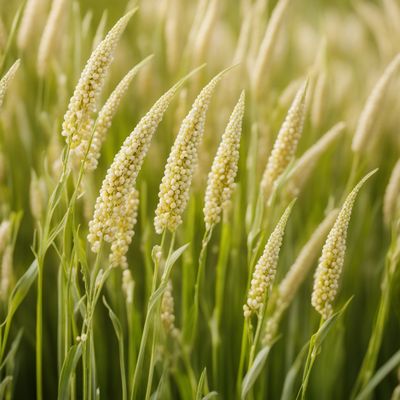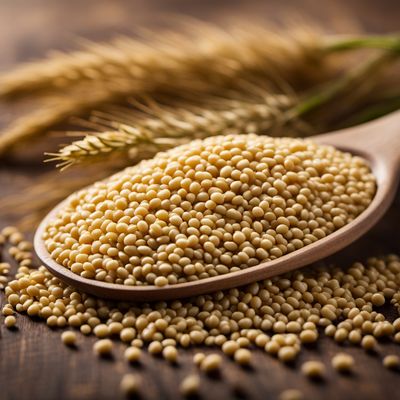
Ingredient
Black fonio grain
The Tiny Nutritional Powerhouse
Black fonio grain is a small, gluten-free grain that is rich in fiber, protein, and essential minerals. It has a delicate nutty flavor and a slightly chewy texture when cooked. The grain is often used as a base for salads, porridges, or as a side dish in various cuisines.
Origins and history
Black fonio grain has been cultivated for centuries in West Africa, particularly in countries like Nigeria, Senegal, and Mali. It has been a staple food for many African communities and holds cultural significance in their culinary traditions.
Nutritional information
Black fonio grain is a nutrient-dense ingredient, providing a good source of fiber, protein, iron, and magnesium. It is also low in fat and calories, making it a healthy addition to meals.
Allergens
There are no known allergens associated with black fonio grain.
How to select
When selecting black fonio grain, look for packages that are tightly sealed and free from moisture or signs of insect infestation. Opt for organic or sustainably sourced varieties whenever possible.
Storage recommendations
To maintain the freshness of black fonio grain, store it in an airtight container in a cool, dry place. Avoid exposure to moisture or direct sunlight, as it can cause the grain to spoil or lose its nutritional value.
How to produce
Black fonio grain can be grown in warm climates with well-drained soil. It requires minimal maintenance and can be harvested within 2-3 months of planting.
Preparation tips
To prepare black fonio grain, rinse it thoroughly under cold water to remove any impurities. Then, cook it in a ratio of 1:2 (fonio to water) until the grains are tender and fluffy, usually around 10-15 minutes. Fluff the cooked fonio with a fork before serving. For added flavor, you can toast the grains in a dry skillet before cooking.
Substitutions
Quinoa or amaranth can be used as substitutes for black fonio grain, as they offer similar nutritional profiles and textures. However, they may have slightly different flavors.
Culinary uses
Black fonio grain is commonly used in salads, pilafs, porridges, and as a side dish in African and Caribbean cuisines. It can also be incorporated into baked goods like bread or muffins for added texture and nutrition.
Availability
Black fonio grain is commonly available in West African countries, such as Nigeria, Senegal, and Mali. It can also be found in specialty stores or online retailers catering to African or gluten-free ingredients.
More ingredients from this category

Job's tears grain
The Ancient Grain of Health

Canary grass grain
The Nutritional Powerhouse: Canary Grass Grain

Finger millet grain
The Nutritional Powerhouse: Finger Millet Grain

Barnyard millet
The Tiny Grain with Big Benefits: Exploring the Wonders of Barnyard Millet

Common millet grain
The Mighty Millet: A Nutritious Ancient Grain

Teff grain
Teff: The Ancient Superfood

Little millet grain
The Mighty Mini Grain

White fonio grain
The Ancient Superfood: Unlocking the Power of White Fonio Grain

Pearl millet grain
The Nutrient-Rich Ancient Grain: Pearl Millet Unveiled

Foxtail millet grain
The Ancient Superfood: Foxtail Millet Grain